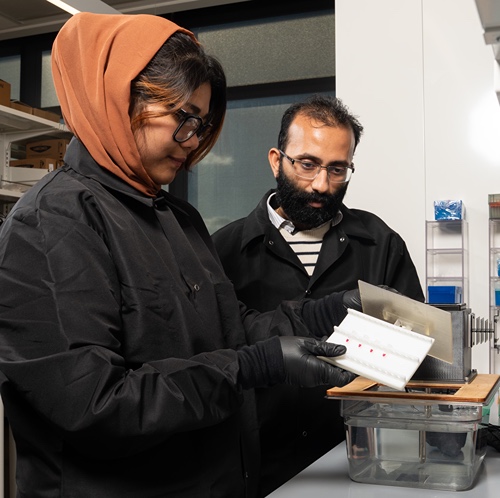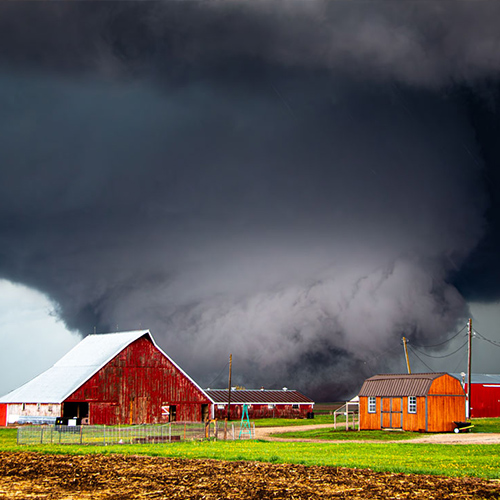Emily Forsythe - Graduate Ag Research Spotlight
Basically we’re doing this huge survey with the IDNR. We want to know how people value wildlife while they’re at different recreational sites, and how it changes depending on what they’re doing.
- Emily Forsythe, MS student, Department of Agricultural Economics
THE STUDENT
Growing up in the small town of Livingston, Montana, Emily Forsythe knew she wanted to go to college; she just wasn’t sure what her academic focus might be. Then a high school economics class and field trip to the Federal Reserve Bank in Helena prompted Forsythe to major in economics at Montana State University. She discovered agricultural economics in her senior year, as a teaching assistant to professors who did ag research. They suggested she explore graduate study to build on her interest in natural resource and environmental economics. “My undergraduate advisor thought I would mesh here at Purdue, and he was right,” she says. “Everyone in the department was so welcoming, and once I met Dr. Reeling [Carson Reeling, associate professor of agricultural economics], that sold me. His work in the environmental realm seemed like a great opportunity.” Forsythe arrived at Purdue in August 2021.
THE RESEARCH
Forsythe is part of a survey project in collaboration with the Indiana Department of Natural Resources. The survey, mailed in May 2022, was designed to learn about Indiana residents’ hunting and trapping preferences, as well as their experiences and the wildlife they see at different recreational sites like state parks and state forests. The study specifically estimates the values people place on white-tailed deer and furbearer species — bobcats, coyotes, river otters, raccoons and red fox — and how the value changes based on people’s activities, including hiking, picnicking or boating. The data is being used to help the IDNR determine the value of wildlife watching by estimating willingness-to-pay values for the deer and furbearer species. For example, while the agency’s furbearer biologists expected white-tailed deer to be of greatest interest, the survey showed red fox ranked highest for every activity, Forsythe notes.
OPPORTUNITIES
Research was new to Forsythe when she arrived at Purdue, and she credits Reeling for enabling her to come up to speed quickly by helping design the survey, attending DNR meetings and presenting her work at a meeting of furbearer biologists from 13 Midwest member states. As social chair for the Graduate Student Organization, she organizes events and weekly coffee hours through which she meets other graduate students and faculty members and learns about their research. She especially values the diversity of her peers’ backgrounds: “I was worried about catching up on agriculture, but it’s doable to get into ag if you want to.”
FUTURE PLANS
Forsythe intends to stay on for doctoral work after defending her master’s degree thesis this summer. “A PhD was always on my radar, but I had an asterisk by it ,” she says. “I love school, but I didn’t know if I’d like Purdue or if I’d like research.” Knowing now that she likes both, she is willing to branch out academically but hopes to continue to focus on topics related to natural resources and environmental economics. In her spare time, Forsythe enjoys spending time with her cohort and watching Purdue sports: “Being a part of the Big 10 has been exciting,” she says. Comparing distances in the West, she appreciates Purdue’s central location for exploring Indianapolis and Chicago and sightseeing along the East Coast.






